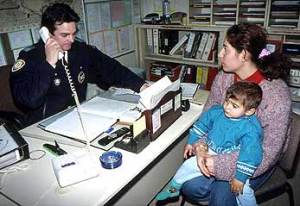Posted 10/05/2013 by Janet Phillips

It is expected that there will be several items in this year’s Budget directly affecting asylum seekers and refugees, some of which will require significant increases in expenditure. In particular, funding associated with the cost of intercepting and detaining irregular maritime arrivals (IMAs) is likely to increase significantly.
However, other recent Government announcements affecting asylum seekers and refugees will also require additional funding—most notably the Government’s decision to increase the number of places available under the Humanitarian Program and the decision to increase the family reunion stream of the Migration Program by 4000 places for humanitarian entrants (and remove access to family reunion under the Humanitarian Program for IMAs). This FlagPost provides background on the changes to the Migration and Humanitarian programs that will have flow on effects for asylum seekers and refugees, both offshore and onshore.
Humanitarian Program placesSince 1995–96, Humanitarian Program planning levels have hovered between 12,000 and 13,750 places, but refugee advocates have argued for an
increase in Australia’s resettlement commitment for many years. The previous Minister for Immigration and Citizenship, Chris Bowen,
stated on several occasions that his preference would be to increase the Australia’s humanitarian intake to 20,000. However, he also pointed out that such an increase would be expensive.
In spite of the expense, and in line with recommendations of the
Expert Panel on Asylum Seekers, the Government
announced on 23 August 2012 that it would be increasing Australia's Humanitarian Program to 20,000 places in 2012–13. The decision included an immediate commitment to resettle an additional 400 refugees directly from Indonesia.
In an address to the Institute of Public Affairs in April 2012, the Leader of the Opposition, Tony Abbott, also proposed an
increase in humanitarian intakes under a Coalition Government through sponsorship options by allowing ‘community groups to sponsor refugees on a bonded basis that would take the annual intake to 15,000’. Mr Abbott also made a
commitment to his parliamentary colleagues in June 2012 that a Coalition Government would increase the Humanitarian Program annual intake to 20,000.
However, on 23 November 2012 Mr Abbott
announced that a Coalition Government would return the annual intake to the level of 13,750 (with 11,000 of the places reserved for offshore entrants). In a joint press conference on 23 November 2012 the Shadow Minister for Immigration and Citizenship, Scott Morrison,
stated ‘Not one of those places will go to anyone who comes on a boat to Australia. They will go to people who have come the right way’.
Migration Program family reunionIt is also expected that there will be funding in this year's Budget for more family stream places under the Migration program in response to a recommendation made by the
Expert Panel on Asylum Seekers in August 2012. The Panel recommended that irregular maritime arrivals (IMAs) should only be eligible to sponsor family within the family stream of the Migration Program and not through the Special Humanitarian Program (SHP). This
change was proposed by the Panel to relieve backlogs and delays in the SHP that ‘could exceed twenty years’ due to the increase in boat arrivals. It was also designed to discourage families from sending single adult males and unaccompanied minors (UAMs) who then go on to apply for family reunion. Under the Expert panel’s proposals, UAMs would instead have to sponsor their parents (and siblings as secondary applicants) under the parent category of the family stream where there are also lengthy waiting times.
The Government accepted the Expert Panel’s recommendations and subsequently
announced changes to the SHP on 22 September 2012 that barred all people arriving by boat after 13 August 2012 from proposing family members under the Humanitarian Program. The changes also removed access to SHP family reunion concessions for people arriving by boat before 13 August 2012 (although UAMs who arrived before that date were still eligible). As explained in
Australia’s humanitarian Program 2013–14 and beyond, under the previous arrangements, family members of IMAs were considered to automatically meet the ‘compelling reasons’ criterion of the subclass 202 Global Special Humanitarian Visa, but that concession has now been removed. All applications will also now be given lower processing priorities. To accommodate the expected increase in demand for visas in the family migration stream the Government announced it would increase the number of family stream places by 4000 per year which will be quarantined specifically for humanitarian entrants (IMAs and non-IMAs).
While many refugee advocates have praised the Government for the increase in Humanitarian Program resettlement places and family reunion options for humanitarian entrants, they have expressed
concerns that strict eligibility requirements and high application costs under the Migration Program will effectively prevent access to family reunion options for most IMAs and that the barriers to resolving these issues will be
significant.
Image source: http://www.unhcr.org